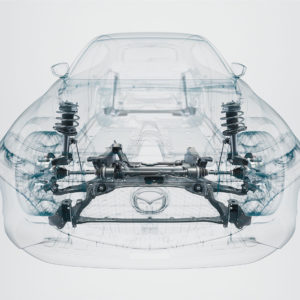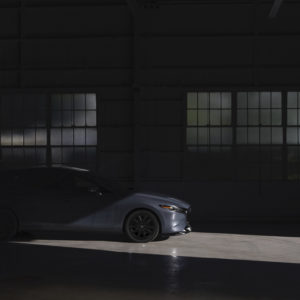Turbocharged engines have turbo lag, an annoying quirk that makes car enthusiasts steer away from forced-induction engines.
What Is Turbo Lag?
Unlike naturally aspirated engines, turbocharged engines don’t immediately produce power when the driver floors the throttle pedal. The delay between the driver’s input on the throttle pedal and the engine’s response is called turbo lag. Even though this delay typically lasts for only around a second, it causes an unpleasant experience for the driver. The time spent spooling up the turbocharger can especially be detrimental in a race, where milliseconds are crucial.

Why Does Turbo Lag Happen?
Turbo lag happens because the engine isn’t producing enough exhaust gas to spin the turbocharger’s turbines. There are two turbines in a turbocharger, one that’s driven by the exhaust gases and another that forces air into the intake manifold. These turbines have mass and they need adequate exhaust pressure from the engine before they can spin and generate boost.
Turbo lag is most noticeable when the engine is cruising at low-RPM, low-load situations because the engine is producing little exhaust gas. Engines need to reach a certain load before they create enough airflow in the exhaust to create boost pressure. This RPM is called the boost threshold, and the turbocharger will only spool up and generate power when the engine reaches this threshold.
Every turbocharger is different, and each one is designed to create boost at a specific engine RPM. The turbochargers in rally cars are large and require a lot of exhaust pressure before they spool up. This is why they have advanced anti-lag systems to keep the turbochargers spinning. These turbochargers are able to produce a lot of boost pressure once they spool up, which allows the engine to produce a lot of power. Meanwhile, the turbochargers in conventional vehicles have smaller turbos that produce less boost but are easier to spool.

How To Get Reduce Turbo Lag
There are several techniques and modifications that can decrease or get rid of turbo lag.
Note: Take note that any modifications that you make to your vehicle can increase your vehicle’s emissions, which can affect its compliance with your state’s emissions standards. Most states typically don’t allow turbocharger upgrades to vehicles outside of what the manufacturer allows. Additionally, any modifications can interfere with your vehicle’s emissions system.
Keep Your Engine RPM Up
Keeping your vehicle at a low gear with a high engine RPM is an easy way to get rid of turbo lag. This is useful when you aren’t interested in making modifications to your vehicle, but still want to set lap times on your local racetrack. However, regularly maintaining a high RPM isn’t practical because your engine will consume more fuel and wear out faster.
Before making any modifications to your vehicle, make sure it complies with your vehicle’s emissions system and stated inspections. Most states do not allow turbo modifications outside of what the manufacturer allows.
–Anthony Harlin, ASE Certified Master Automobile Technician
Add Nitrous Oxide
Nitrous oxide is a gas that splits into nitrogen and oxygen when it’s heated inside your vehicle’s engine. When you add nitrous oxide, your engine will have a burst of power. This burst of power can increase exhaust flow and engine RPM in no time, therefore eliminating turbo lag.
If you add a nitrous oxide system to your engine, you’re going to put more strain on the engine’s internals. If you don’t know what you’re doing, you can end up destroying your engine.
Increase Compression Ratios
Turbocharged engines in the ’80s used to have low compression ratios to compensate for the heat and pressure when the boost went up. Engines produced little power when the turbochargers weren’t producing boost because the compression ratios were too low. As fuel and intercooling technology evolved, it became normal to see turbocharged engines with compression ratios ranging from 9:1 to 10:1. Higher compression ratios helps the engine produce power at low RPMs, which helps the engine reach its boost threshold.
Add a Smaller Exhaust Housing and Wastegate
A smaller exhaust housing will cause the exhaust gases to flow faster, allowing the turbocharger to spool more quickly. However, high engine RPM can cause too much exhaust gas to flow into the turbo. An exhaust wastegate might also be needed to relieve the excess exhaust pressure at high RPM.
Note: Remember adding a wastegate to your vehicle can interfere with engine function. Since various sensors will have different readings because of the wastegate, your powertrain control module might have trouble processing the sensor data, affecting its performance and reliability.
Shorter Gear Ratios
Turbochargers work best when they’re operating at high engine RPMs. Shortening the transmission’s gear ratios will help spool the turbocharger because reaching the boost threshold will be easier.

Anti-Lag Systems
Anti-lag systems work by injecting fuel and air into the exhaust gas when the driver lifts up from the throttle. This keeps the turbochargers spooled up and allows the engine to readily produce power when the driver presses on the throttle again.
Assisted Turbocharging
Assisted turbocharging focuses on increasing the power of the turbo by adding external devices such as electric motors, additional compressors, or more forced induction devices. Several manufacturers are currently exploring electric turbocharging.
Multistage Turbocharging
Another way to fight turbo lag is to use multistage turbocharging. Although bigger turbochargers generate greater boost, they sacrifice responsiveness. That’s why some vehicles are fitted with smaller turbochargers that start functioning at lower engine speeds. Manufacturers are turning to multistage systems that employ turbos that have different sizes to get the best of both worlds.
Right now, more and more modern vehicles use turbocharged engines over their naturally-aspirated counterparts because of benefits like better emissions and fuel economy. When turbochargers started appearing in high-performance cars, critics and vehicle enthusiasts were quick to criticize vehicle manufacturers over turbo lag. Many still favored its naturally-aspirated counterpart. However, better turbocharger designs and turbo-lag eliminating technology have made turbo lag imperceptible for even the most eagle-eyed critics.
Completely eliminating turbo lag might be impossible given that most vehicle manufacturers are transitioning to electric vehicles. But seeing drivers and engineers go to great lengths to eliminate this quirk just goes to show how much they value the small details that make driving fun and engaging.
Any information provided on this Website is for informational purposes only and is not intended to replace consultation with a professional mechanic. The accuracy and timeliness of the information may change from the time of publication.

































